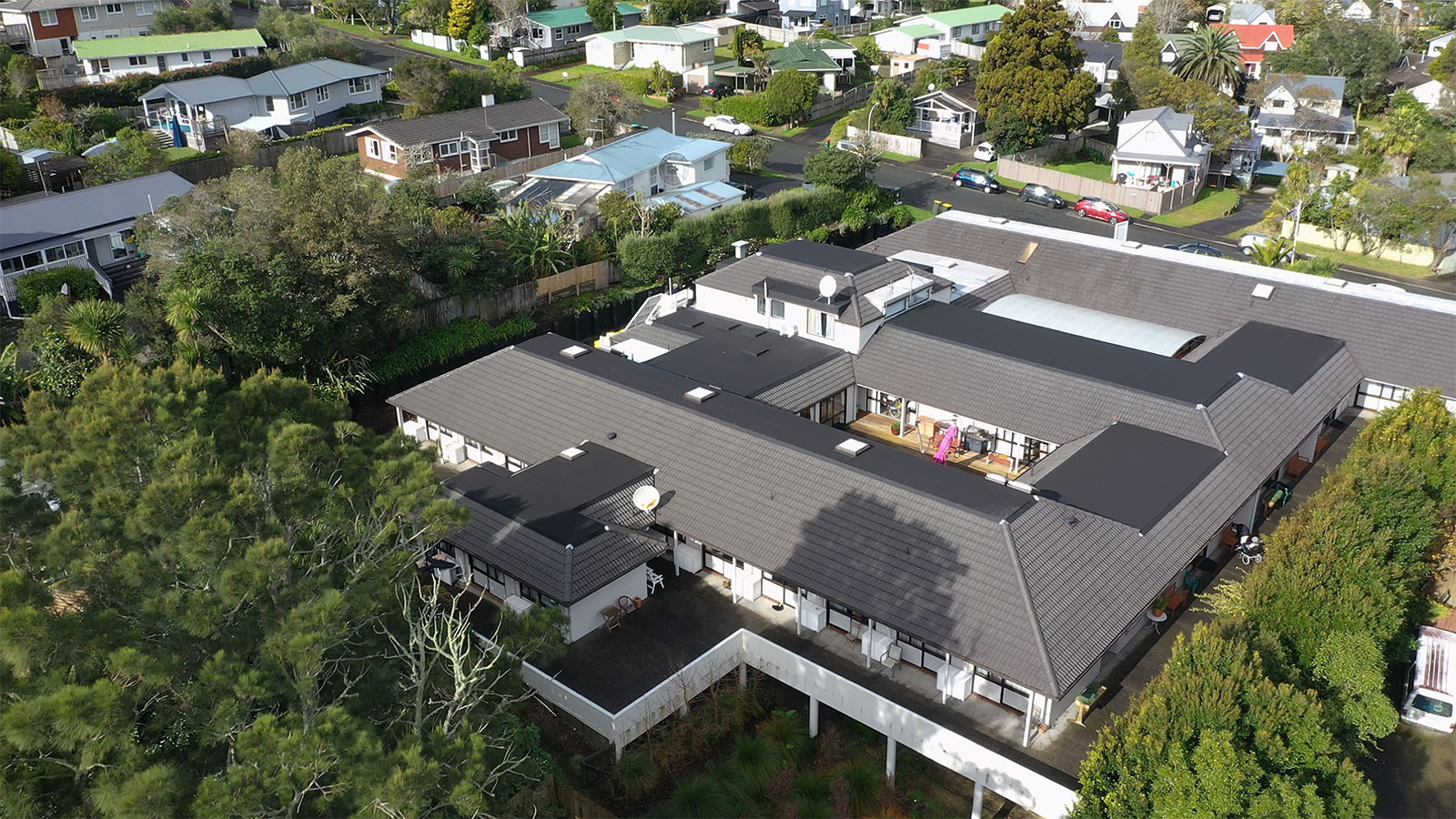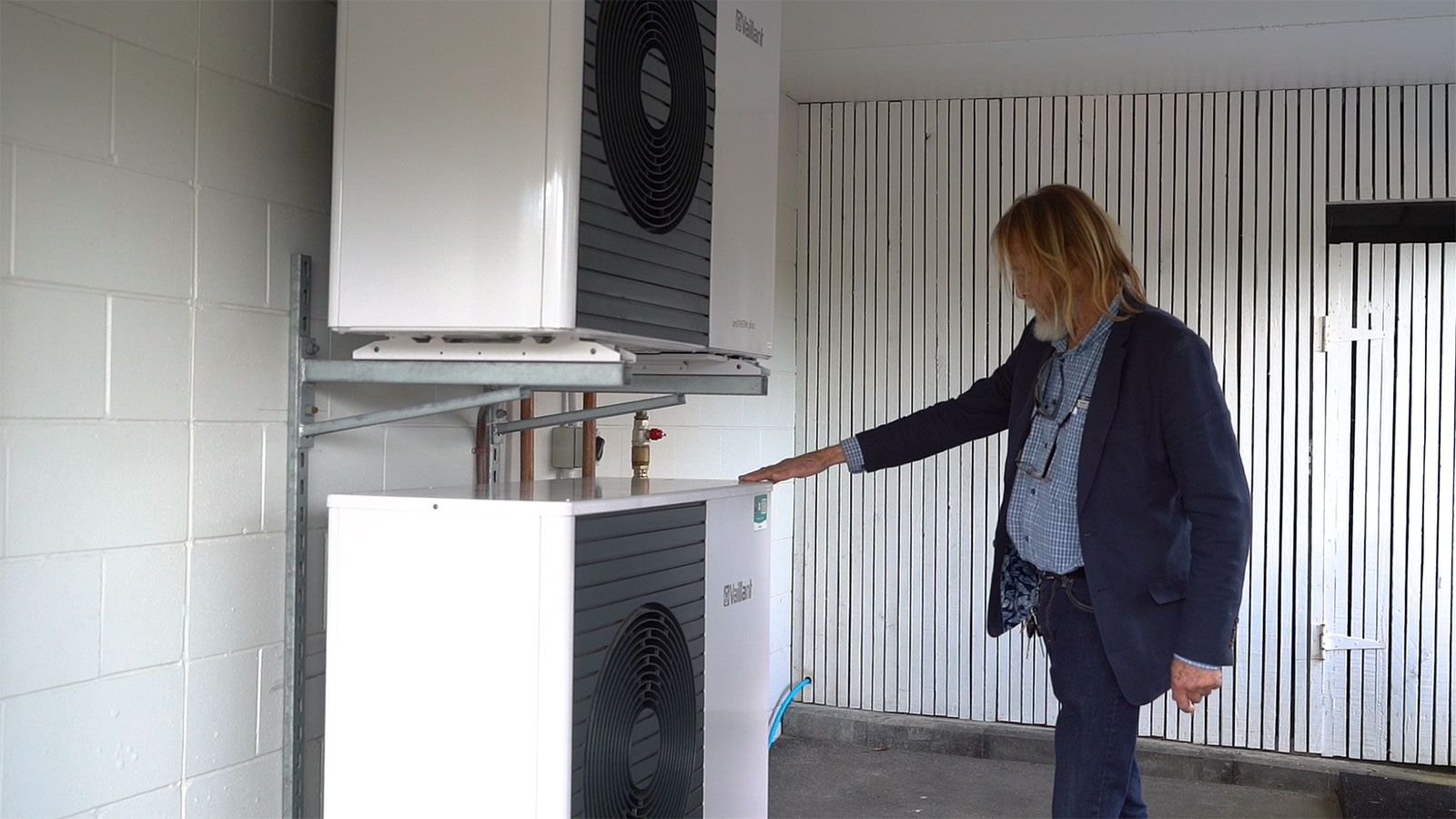Oceania Healthcare is the third largest provider of retirement and aged care in New Zealand, with a portfolio of 47 retirement villages and care centres, 4000 residents and about 3000 staff across the country. Over the past year, Oceania have refreshed the sustainability framework that underpins their strategy, focussing on reducing greenhouse gas emissions.
Oceania’s Head of Sustainability, Stephanie Spicer says the company is working hard to embed sustainability into its DNA – in both its new building programme and in its existing facilities.
"It’s about long-term value for our stakeholders. Whether that’s our residents, our people, or our investors," says Stephanie.
Energy use in the aged care and retirement living sector is made up of an estimated 34.5% fossil fuel and 65.5% electricity. Analysis carried out by EECA found that almost all the fossil fuel used within the sector is natural gas or LPG. New Zealand’s highly renewable grid makes electricity a low emissions option.
New Zealand currently has approximately 90,000 residents living in aged care and retirement living facilities, with the sector producing about 66,000 tCO2e per year. These emissions come from the everyday operation of the facilities – primarily heating, cooling, and lighting.
It makes business sense and the example here is that Te Mana really shows you can get efficiencies, reduce costs, and ultimately have great outcomes in terms of carbon reduction and resident wellbeing.
Measuring for success
Oceania has been measuring its scope 1 and 2 (plus waste and business travel) greenhouse gas emissions since 2019, and in 2022 the team did a full scope 3 inventory. Scope 1 are direct emissions from an organisation, scope 2 includes indirect emissions from purchased energy and scope 3 includes indirect emissions from organisational activities generated elsewhere.
Measuring its scope 3 impact involved calculating all its indirect emissions; working with internal stakeholders, suppliers and construction partners to get a holistic view of their emissions data across purchased goods and services, embodied carbon in new developments and refurbishments, waste and employee commuting.
“Measurement is key. We can use data to work out what our impact is in the area. It’s important to have that information so we can create a plan around decarbonisation,” says Stephanie.
Oceania recognised that new developments and refurbishments are the biggest source of emissions for the business. Going forward, new builds are designed without fossil fuels - relying on electricity for energy. Oceania is also working to reduce emissions on existing properties, primarily through transitioning away from gas use through retrofitting hot water heat pumps.

Sustainable care
Oceania’s care centre, Te Mana, in Birkdale on Auckland’s North Shore offers 46 care beds across rest home, hospital and palliative care levels.
Te Mana Business and Care Manager, Sharon Chatterton, says given the age of the building, the ongoing maintenance provides an opportunity for the team to look at their emissions and energy use.
“The building has been here since 1985 so each time something needs to be fixed, we ask, if we can we do it better, or more sustainably? If we can reduce our carbon footprint?” says Sharon.
The Oceania team target the New Zealand Green Building Council certification for Homestar in its new residential developments and are now looking at Greenstar for community and care buildings. “These certifications not only demonstrate great energy efficiency but also promote health and wellbeing, offering warmer and drier homes for our residents,” says Stephanie.
For the older buildings in Oceania’s portfolio – like Te Mana – the team are switching from gas to electricity to reduce their carbon footprint even further. Top of the list of things to convert to electricity are the gas used for hot water as well as investigating gas dryers in the laundries at several sites. The team are also looking at additional energy saving actions - recognising that the most sustainable energy is the energy they don't use.
“We have had a program to roll out LED lighting, and shower flow restrictors, but now through our refurbishment program, we are looking to make changes that align with the Healthy Homes Standard and other energy efficiency measures,” says Stephanie.

Less energy, more hot water
The team decided to look at new hot water heating options at Te Mana after it became clear that the existing cylinder system wasn’t meeting the needs of the residents.
“We use a lot of hot water per shower especially for the hospital level patients and we were starting to run low on hot water. Resident quality was the driving factor to upgrade the water system,” says Grant Johnson, Regional Facilities Manager - Northern, Oceania.
The team investigated the options and found they didn't have the electrical capacity required to simply increase the hot water cylinders to meet the water required.
“We would have needed to add a further 50% increase in hot water cylinders taking the energy output from 24kW to 36kW. We would have been pushing it to the extreme to get that power and it would have allowed us no extra power for the future.”
The new hot water heating system is made up of two 9kW heat pumps that feed into a 1000 litre holding tank. The system allows almost infinite hot water due to the set-up, which allows Te Mana to use the first 500 litres while the second 500 litres is heating up faster than the team can use it.
“We are getting more water than we can use at any given time - that’s significant. So, it was a no brainer to go with two hot water heat pumps - use less power and get more hot water,” says Grant.
Additionally, if one of the heat pumps fails, the second one will kick in and keep the flow of hot water. Having two units also means the load is shared between them reducing continuous wear and tear.
Changing the hot water system meant decommissioning and removing the old hot water cylinders at the last minute - which only took about 30 minutes – but the main challenge in implementing the project was timing.
“It’s a reasonably new technology and it was a learning curve for me, the electrician, and plumbers.
“It’s a computer driven system so it was not just a matter of assembling the unit and switching over, we had to work for hours to get it just right. The computer system took us a long time to tweak – but it was ultimately worth the challenge,” says Grant.
More hot water, lower operating costs
The installation of the hot water heat pumps has seen instant benefits. Post installation, the carbon emission savings have been calculated at approximately 6T CO2e per year, while doubling hot water capacity and from a cost saving perspective, Sharon estimates that Te Mana’s energy bill has decreased by $1000 per month.
Grant agrees saying, financially, the switch to hot water heat pumps speaks for itself.
“Comparatively we are getting a huge payback. We needed better, high quality water and the old tech would have struggled to deliver it. This new technology produces more hot water and faster.
“But ultimately it really wasn’t about the financial payback, for us it was about resident experience and now it is delivering so that’s the payback. There are huge financial savings, and we are drawing less power off the grid - that means a lot,” says Grant.
Kevin agrees saying that Oceania have seen a 15% reduction in energy costs.
“It’s the triple bottom line. We have got better quality hot water, sustainability, and the financial benefits - so it is a win win situation for the whole environment,” says Kevin.
The future of aged care and retirement living is low emissions
By encouraging collaborative, proactive solutions to sector-wide challenges, the Aged Care and Retirement Living Decarbonisation Pathway aims to take the learnings from others to help reduce the impact of the sector on the climate, while also reducing costs and ensuring future business continuity in a low emissions environment.
They also have very happy residents – and staff.
“The residents have benefited from this installation through almost unlimited hot water. They can shower to their heart’s content and be comfortable in the knowledge that there is plenty of hot water for all their needs,” says Kevin Ingle, National Facilities Manager, Oceania Healthcare.
Oceania has set an ambitious sustainability program out to 2030 and one of the key goals within that framework is to reduce GHG emissions in line with evidence-based recommendations.
“We have committed to setting a science-based target and have a robust carbon emissions plan that sits behind that to reduce our scope 1 and 2 emissions by 42% by 2030. That involves a huge amount of work around energy efficiency, around converting off fossil fuels, whether that’s within our homes, switching boilers to electric or within our vehicle fleet,” says Stephanie.
EECA’s Aged Care and Retirement Living Decarbonisation Programme is supporting New Zealand facility owners and managers in their transition to a low emissions business. The pathway is also helping to futureproof against climate change and the challenges that the industry is collectively facing.
The Oceania team’s advice for businesses starting on their decarbonisation journey
- Do your homework - understand your needs and what suits your business. Understand the options out there on the market.
- Measure your impact - Once you know what your numbers are you can create a plan and I would engage with your people because they have got great ideas on how to be more energy efficient, reduce your emissions and will be your biggest champions.
- Be interested in the new – Don’t be afraid of new technology. The technology is out there. It’s continually evolving and there are great savings to be made.
- Collaborate - Reach out to external stakeholders like EECA, they have great advice! Also, organisations like the Sustainable Business Network. There are a lot of organisations out there that are keen to help - even others within your own sector.
- Don’t be put off by the upfront cost of new technology – while new tech can cost more, you might find the overall project costs are lower depending on your needs. And the ongoing costs of hot water heat pumps are normally lower – including energy bills and associated maintenance.
Learn more
-
Aged Care & Retirement Living Decarbonisation Pathway
This pathway follows 5 key steps to help aged care or retirement living operators reduce their energy related emissions and the sector’s impact on the climate.
-
Sector Decarbonisation Programme
Tap into sector-specific knowledge and best practice guidance to decarbonise your business.
-
Hot water heat pumps in commercial buildings
Information for businesses looking for a low-emissions solution to meet hot water and space heating requirements.
